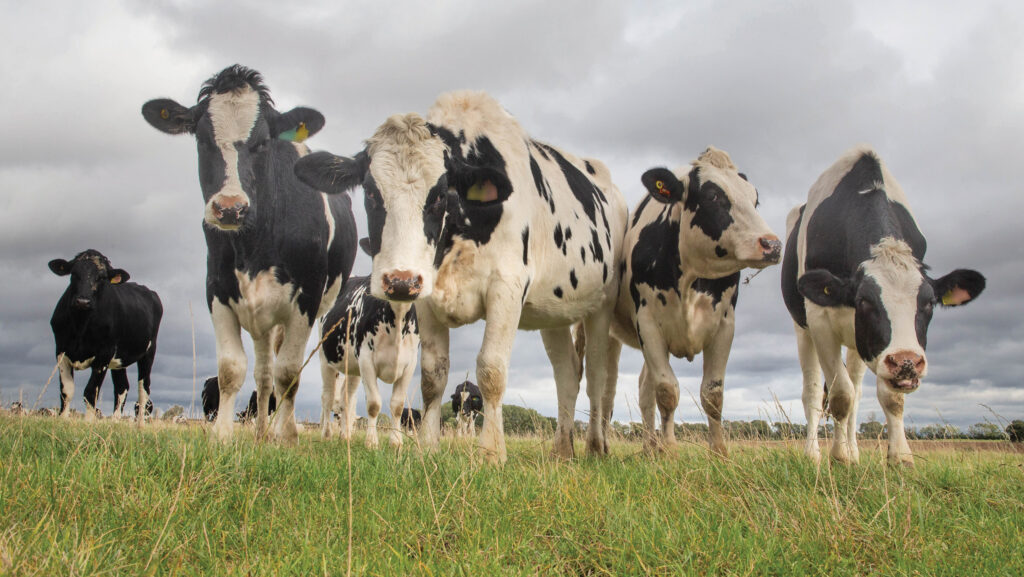Lack of heifer weight data costs US dairies in lost performance
 © Tim Scrivener
© Tim Scrivener Timing first service in a maiden heifer to when she has reached a given percentage of mature bodyweight (not just her age) is essential to maximise genetic potential and future milk production.
US studies show that lighter heifers at calving produce 4.5kg/day less milk early in their lactation compared with heavier herd mates.
This means measuring heifer growth is essential, said Dr Joao P Martins, speaking at this year’s annual Dairy Calf and Heifer Association conference in Colorado.
See also: Advice for rearing heifers from weaning to calving
Joao, an assistant professor in large animal reproduction at the University of Madison-Wisconsin, pointed out that in the US it cost $2,355 (£1,779) to rear a heifer to the point of calving.
“Heifer rearing is costly, and 46% of this cost is feed and 13% labour,” he said.
“Yet [just] 36% of US dairy heifer growers record average daily gain and measure bodyweight to evaluate rearing progress.”
He believes there is potential to improve heifer reproduction and reduce rearing costs by cutting the days to first service and thus feed inputs.
In the US, age at first calving has steadily fallen since 2011 to hit a median of 23.9 months in 2021.
However, Joao expressed concern about reducing the age at first breeding too much because of its influence on first-lactation milk yield.
Percentage of mature weight
At first insemination, a heifer should be 55% of mature body size and 90% of mature height, he said.
Pre-calving, she needs to be 94% of weight (dropping to 85% post-calving) and 95% for height.
Weighing third- and fourth-lactation cows 30 days in-milk will establish a herd’s target mature weight, he added.
A study of records in a 7,000-cow Holstein herd looked at the association between reproductive performance of maiden heifers on subsequent bodyweight and first lactation.
Heifers were weighed 30 days in-milk; there were no pre-calving weights.
The lightest animals calved at 674.6 days of age at 74.7% of mature bodyweight, said Joao.
Conception rates were “spectacular”, at 72%.
The heaviest heifers calved aged 694.6 days, weighing 91.9% of mature bodyweight and with a conception rate of 46%.
But he pointed out that getting pregnant sooner had a downside: milk production was 10lb/day (4.5kg/day) lower when measured at four and 12 weeks of lactation.
Genetic influence
Dr Tom Tlyutik, head of Ag Modeling and Training Systems, stated the weight of US Holstein cows in 1984 science trials was 535kg.
Forty years later, this had risen to 640kg.
“The pace of genetic change has accelerated, and this is telling us that our existing targets for breeding and first calving weights are moving targets,” he said.
As genomics has further speeded up genetic progress, Tom said it has resulted in dairy herds not knowing their mature cow weights or performance potential of the kind of cow they are trying to breed.
He suggested one new “do-able” target was to triple calf birthweight by 90 days of age.
But setting target growth rates needs to consider that heifers do not grow uniformly throughout their rearing period.
Weigh heifers monthly
“It is most profitable to focus on maximising growth in the first six to nine months, as protein efficiency for growth drops as [a heifer] gets bigger.
“Target calving weight should be achieved six to eight weeks before calving because pregnant heifers don’t grow in the last four to eight weeks of pregnancy,” he said.
“Get scales and weigh your cattle monthly and [as a minimum] at birth, weaning, six months, first service, eight weeks pre-calving and at calving.”
More information on the Dairy Calf and Heifer Association and its 2025 conference
